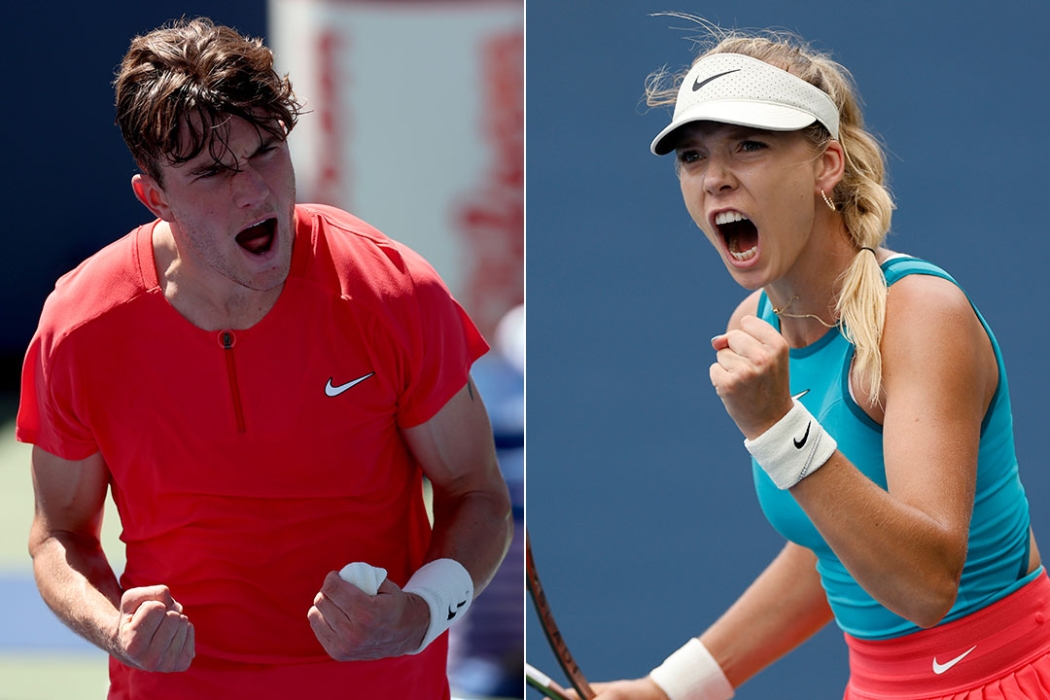A frequent comment, as Karolina Muchova worked her way into the Roland Garros final in June, was how she was the tour’s closest stylistic match to Ash Barty.
Barty, a former world No.1 and three-time major champion, had just created history by winning Australian Open 2022, only to walk away from the game six weeks later.
Her sudden retirement, at age 25, left many fans – and especially tennis purists – reeling.
The space Barty vacated at the top has since been filled by new dominant No.1 Iga Swiatek, who beat Muchova in that French final to win her fourth major singles title.
However, as Muchova progressed in Paris she drew regular comparisons with Barty, thanks to her use of the slice backhand, willingness to come forward, her shot trajectories and ability to construct points.
Like Barty, Muchova is effective on all surfaces, reaching the second week at every major. She emulated Barty again this month when she became a top-10 player.
In Muchova’s first Grand Slam main-draw appearance she made an immediate impact by reaching the third round at the 2018 US Open – where Barty stopped her in two entertaining sets.

Muchova has reached the same stage in New York this week, where she confronts a resurgent Taylor Townsend.
The Czech later avenged that 2018 defeat with a stunning upset of Barty at Australian Open 2021, a win vaulting her into her first Slam semifinal.
In between, Barty won her first major title at Roland Garros in 2019, the same site at which Muchova posted her best Grand Slam result four years later.
A resemblance between Muchova’s playing style, and that of the popular Aussie, certainly passes the eye-test. But is it reflected in the data?
We delved into the numbers to find out.
Evenly matched on clay
Barty’s seven matches to win Roland Garros in 2019, and the seven matches Muchova played there in 2023, made this an easy entry point for comparison.
Barty completed her triumph with a tournament-high 38 aces, compared with Muchova’s 18, which put her in third place among women at the 2023 tournament.
Those 18 aces contributed to Muchova’s total of 201 winners, making her the 2023 tournament leader in that category. Barty was the winner leader in 2019, yet with a lower total of 167.

Barty’s first-serve-points-won percentage of 71 put her in the women’s top 10 of the 2019 event; Muchova’s success rate of 63 per cent meant she was barely inside the top 50.
But on second serves, Muchova eclipsed Barty’s 56 per cent with 58 per cent of points won, putting her in the 2023 tournament’s top five.
Slice is twice as nice
Like Barty, Muchova has a double-handed backhand but frequently deploys a single-handed slice.
Analysing data across three Australian Opens from 2021 to 2023, we find that female players on average hit 15.1 per cent of their backhands as a slice, compared with topspin.
Muchova opted for her sliced backhand 30 per cent of the time. Barty recorded double that again, with 62 per cent of her backhands executed as a slice.
Barty’s percentage is the fifth highest of any woman across the past three Australian Opens. Not only did she slice her backhand significantly more than Muchova, she moved it through the court quicker, with more underspin.
Barty more aggressive in many ways…
Looking at that same AO 2021-23 data, it is clear Barty aimed to assert herself earlier in points than Muchova.
The Australian clocked higher average first- and second-serve speeds, won significantly more points behind her first serve, and held serve more often.
On return, Barty’s contact point on both first and second serves was much higher up in the court – and often inside the baseline.
On the first shot after the serve, Barty was hunting more forehands than the Czech, finding that stroke 77 per cent of the time, compared with Muchova’s 59 per cent.
Barty’s forehand was generally a bigger shot than Muchova’s, when measuring both speed and spin.
… but Muchova in others
When players struck their two-handed backhand, however, Muchova had the edge.
This stroke – especially down the line – was a game-changing shot during her run to the 2023 Roland Garros final.
And across those three Australian Opens we examined, Muchova hit hers harder and flatter than Barty’s – indicating a more offensive mindset from this wing.
While Barty won more net points than Muchova, the Czech charged the net almost three times as often, pressuring opponents.
Muchova has maintained net-rushing tactics at this week’s US Open. She’s averaging slightly less net points per match compared with the AO data, but has improved the percentage of those points won (to 66.6, from 63.5).
Interestingly, Barty’s aggressive return position did not hold as rallies unfolded. The AO data reveals she dropped back and played shots from slightly deeper, on average, in the court.
Muchova contacted a higher percentage of shots within two metres of the baseline, while Barty played a higher percentage from more than two metres behind it.
*Insights in this article are powered by Infosys

